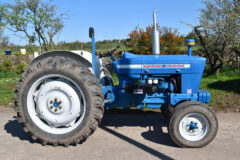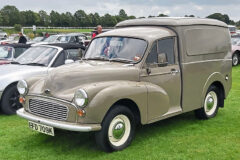Bredgar & Wormshall Light Railway’s Gala Day
Posted by Chris Graham on 10th November 2023
We report on a day spent with 1936 Orenstein & Koppel 0-4-0 engine Helga, at the superb 2ft gauge Bredgar & Wormshall Light Railway in Kent.
All photographs: Peter Love
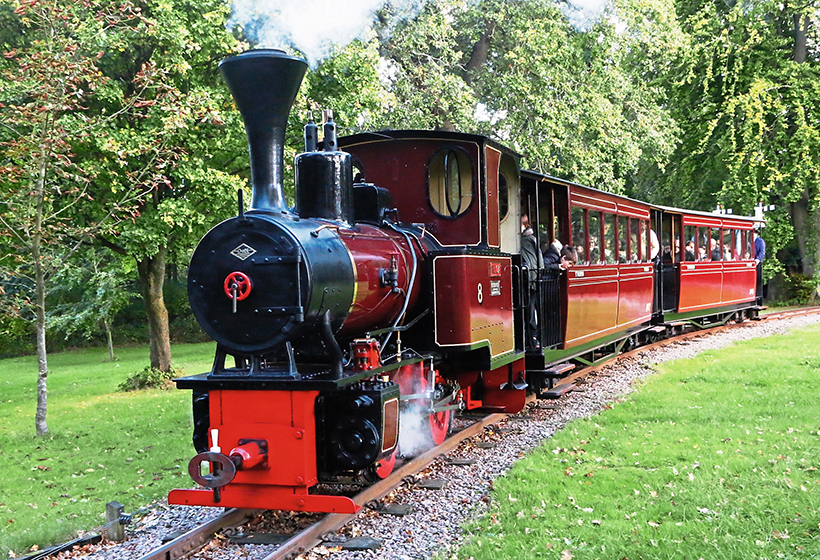
Bredgar & Wormshall Light Railway: Helga was certainly one of the most powerful locomotives at the event. The 0-4-0 well tank was built by Orenstein & Koppel of Berlin in 1936 as No. 12722.
The Bredgar & Wormshall Light Railway was created by the much-missed Bill Best senior, his brother David (still with us) and various friends, back in 1975 in the North Kent Downs. Initially a small industrial diesel locomotive was purchased. This was soon joined by others, but it wasn’t until 1979 that 0-4-0 Bronhilde arrived (now sold on twice and back in Europe). In the meantime sheds had been built, track laid and carriages constructed. As time went on and more locomotives moved to Bredgar, projects became more ambitious. The main line was re-laid, a proper station built and bogie coaches were designed and constructed. Also road steamers arrived including 1919 Garrett 7hp traction engine No. 33442 which gives trailer rides around the site today, along with a Fordson Dexta and E1A Major.
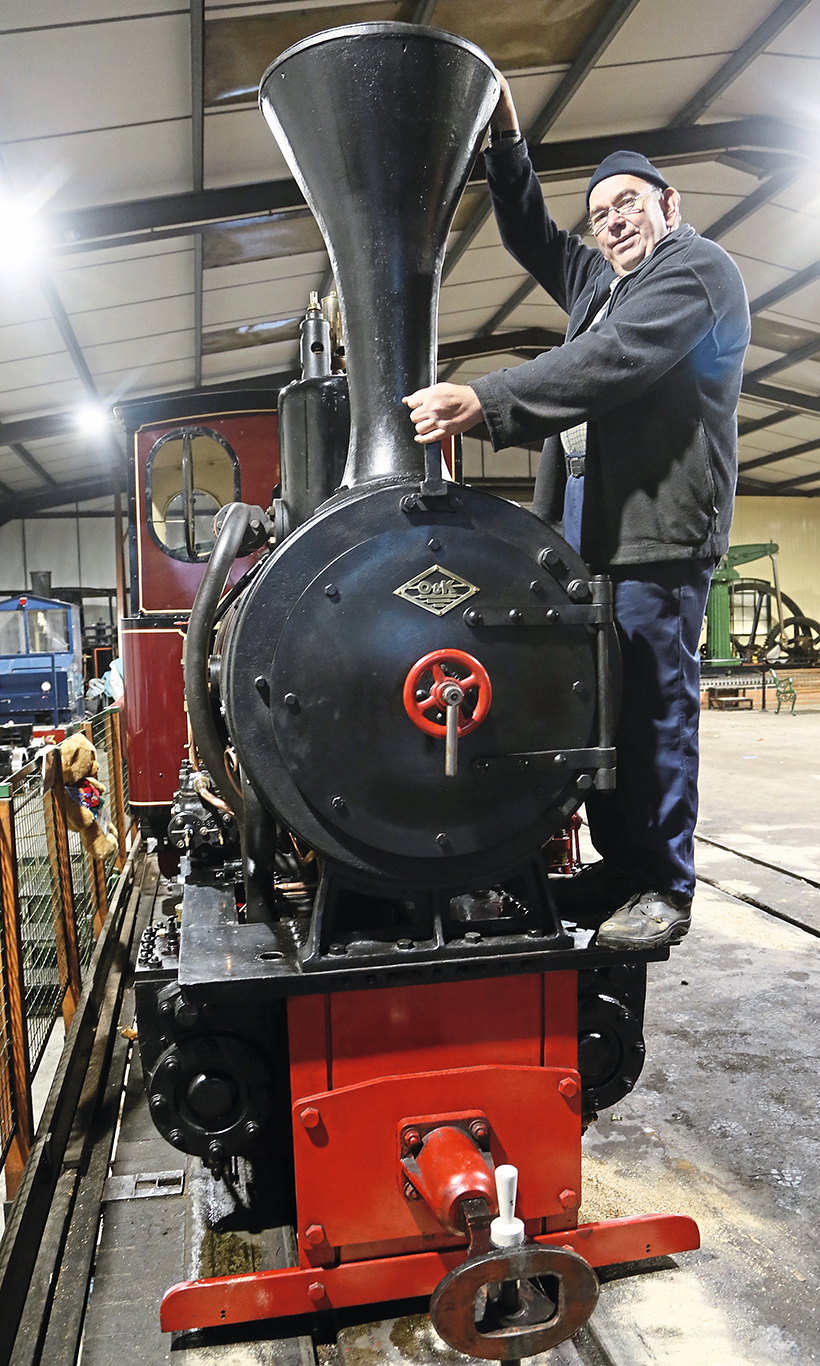
Off comes the chimney cap ready for its steaming for the Gala.
By the late 1980s the railway had grown out of all recognition and a sizeable new locomotive and stock shed with a turntable replaced the original structure. Warren Wood station had been completely rebuilt and a new station deep in the woods, called Stoney Shaw, had been added. As the railway developed, complementary attractions were added: steam stationary engines including an 1870 Thomas Horn from Henwood pumping station, vintage cars, tractors, miniature locos and a model railway. All have historical significance and a unique appeal.
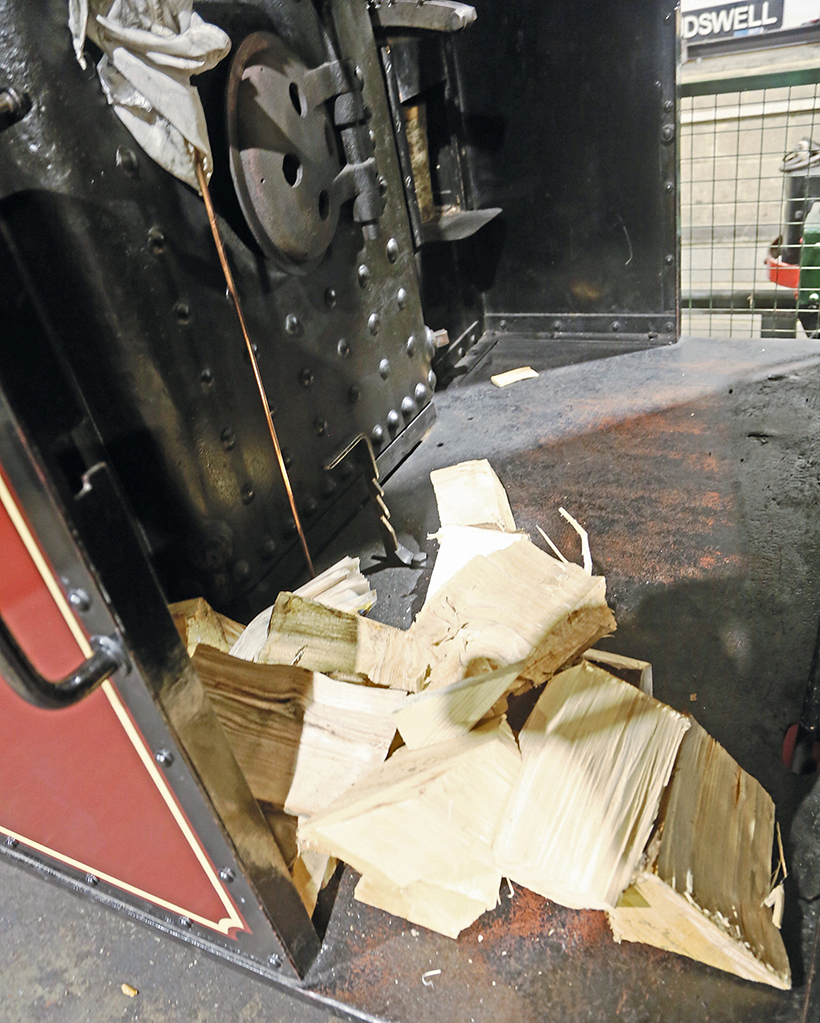
Lighting-up wood was already in place, supplied by resident site ‘fixer’, Tony Baker.
The main objective of the railway is the preservation of steam locomotives in a form which enables railway enthusiasts, the general public and children to appreciate how important this type of energy was to industry for over 100 years.
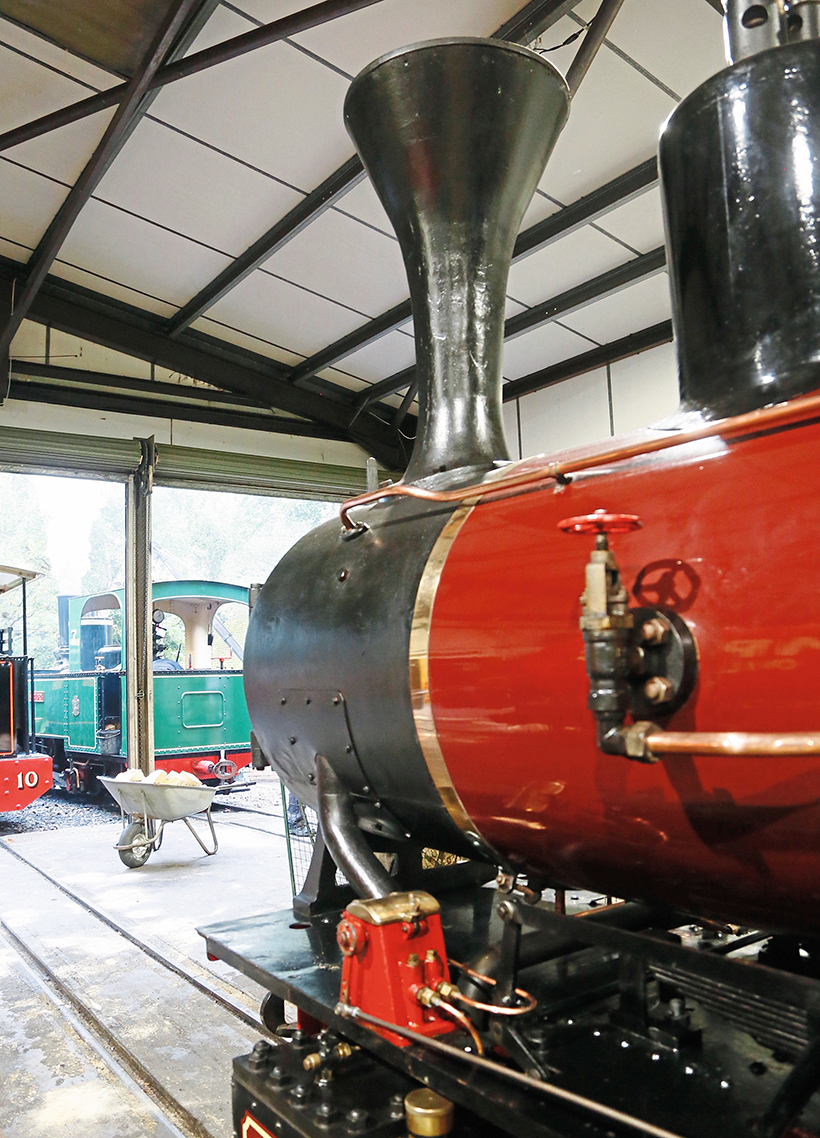
Things are well ahead up front with Victory on the right in the damp and murky early morning conditions
The line is open every month at various times except January and steam is very much part of the show here. Special events are held throughout the year. In June this year there was a 40s weekend, then classic cars in July, a model railway weekend in August, a tractor and agricultural event in September, on 1 October there is a Steam Gala Day, Halloween Diesel Days With Farm Life on 25–29 October and Father Christmas Experiences on 2-3 and 9-10 December 2023. As you can see there is plenty going on and volunteers of all ages are very welcome and are made at home here as I have experienced myself, so why not join the action?
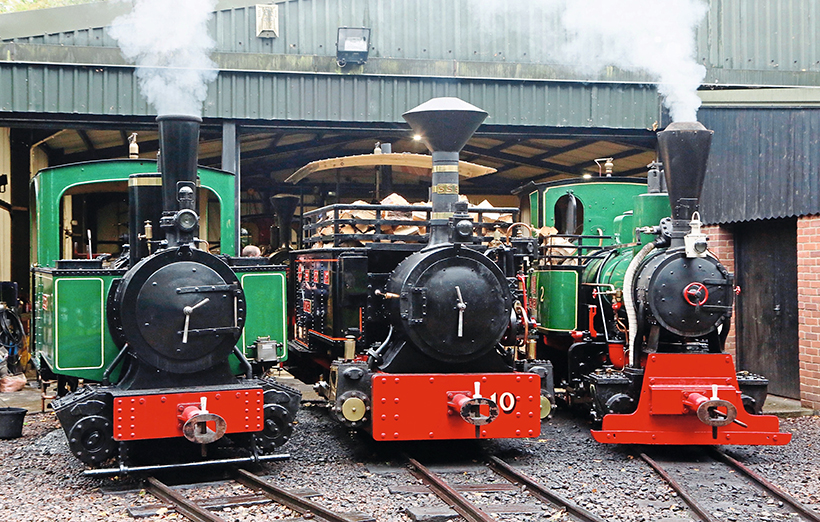
The rain has just about stopped as Victory, Zambezi and Katie make steam
It is a little-known fact that the Bredgar & Wormshill Light Railway was only part of what was to be a very extensive narrow gauge railway linking various agricultural centres in mid Kent. Unfortunately the only section actually built was that which exists today. If it had come to fruition then the Mid-Kent Light Railway might now be as famous as its Welsh counterparts.
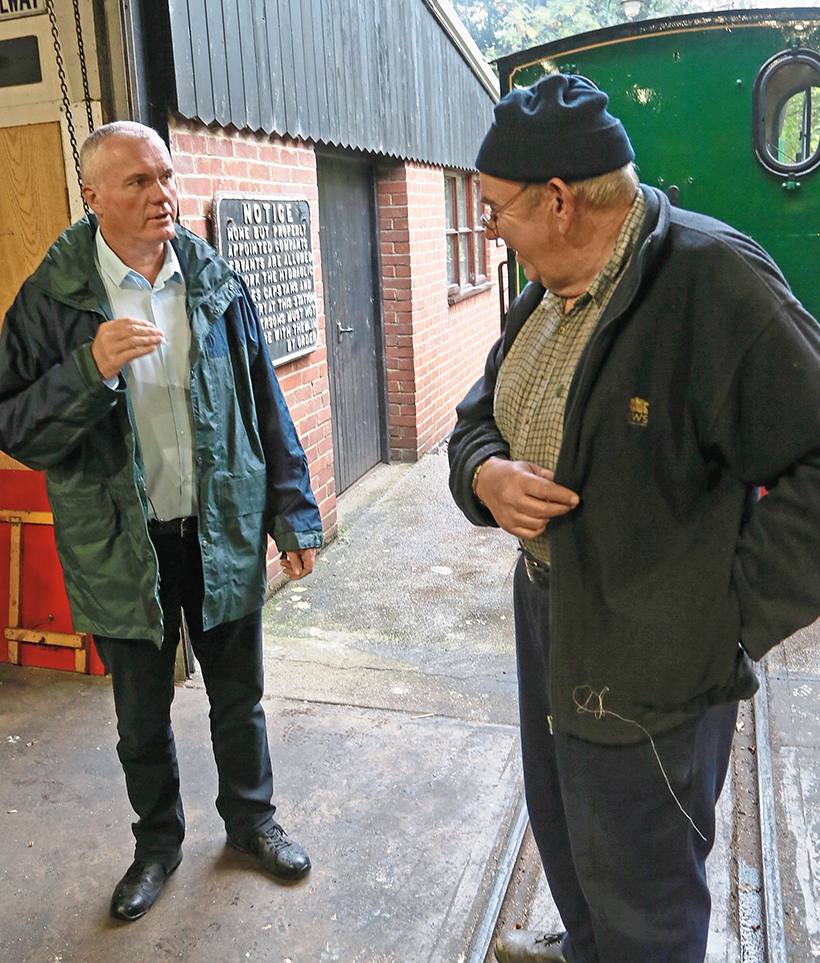
Brian Hope being given instructions by Bredgar & Wormshill Light Railway manager, David Parfitt.
I had originally come to road test the resident Garrett traction engine, but as there had been so much rain the ground was very damp and soggy, not for straked wheels today! I had been asked the previous week would I like to fire a locomotive; “Why not” I said and so here I was on a somewhat dull and overcast first Sunday in October. As the day went on the weather became a glorious day as the crowds flocked to this annual event, there is just time to book for this year’s event.
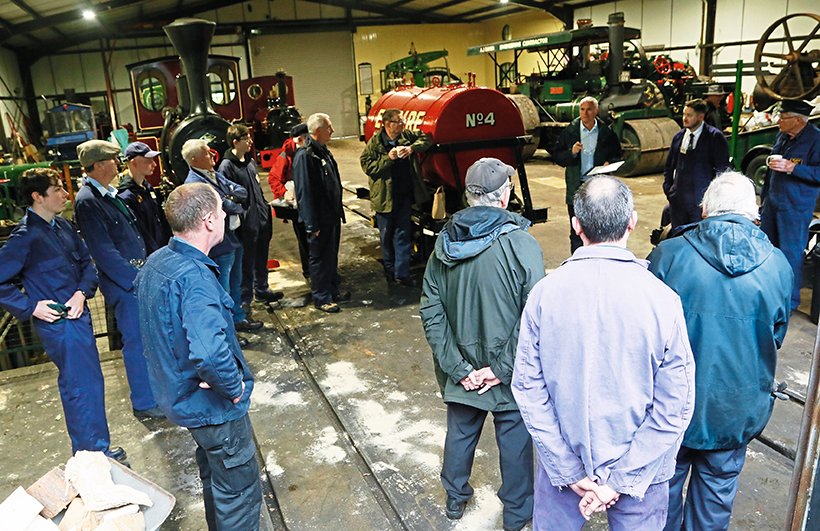
On every day the railway is run, a Health & Safety talk is given before it all happens, as well as running instructions to all the staff involved.
My appointed locomotive was one of the most powerful locomotive here, Helga, the 1936 0-4-0 well tank by Orenstein & Koppel of Berlin, No. 12722. It was owned by Carl Brandt, a contracting company in Bremen and worked on a number of large construction sites in north Germany until 1957. This powerful 0-4-0 was rescued from Bremen by the late Alan Bloom in 1969 for used on his nursery railway at Bressingham, Diss, Norfolk. The long wheelbase and overall weight of the loco proved a problem at Bressingham so it was relegated to reserve engine and only saw service occasionally.
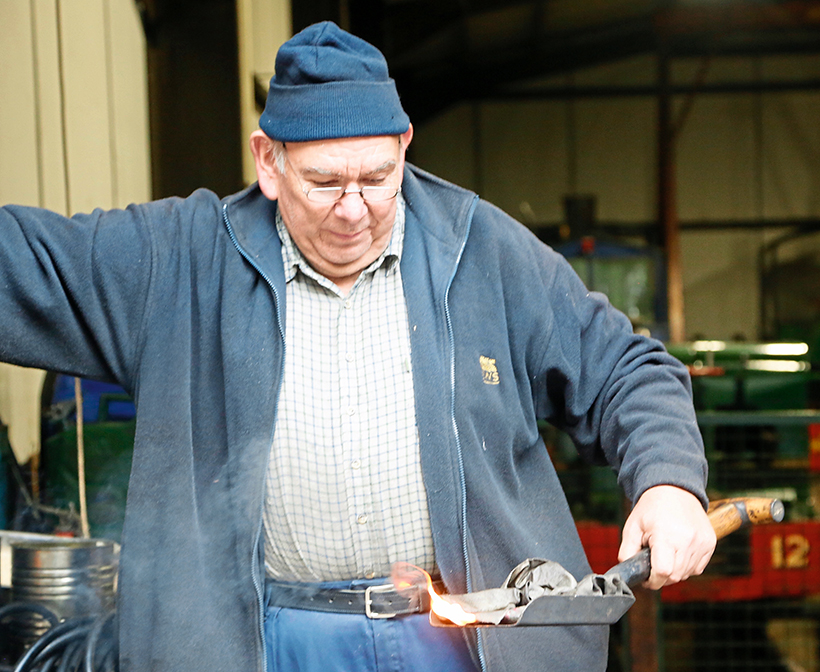
Brian has made sure all the firebars are clean, the ashpan emptied and that there’s water in the boiler before he lights the paraffin-soaked rag to place in the firebox
In 1973 it was sold to the Brecon Mountain Railway in Wales where the running gear was overhauled. In 1999 the loco was purchased by the BWLR, arriving here as a large semi-complete kit of parts, but without a complete boiler. Since then a new boiler was made by Valentine Engineering and the loco returned to service in 2011. It had just completed its 10-year test and was all together ready to go when we arrived.
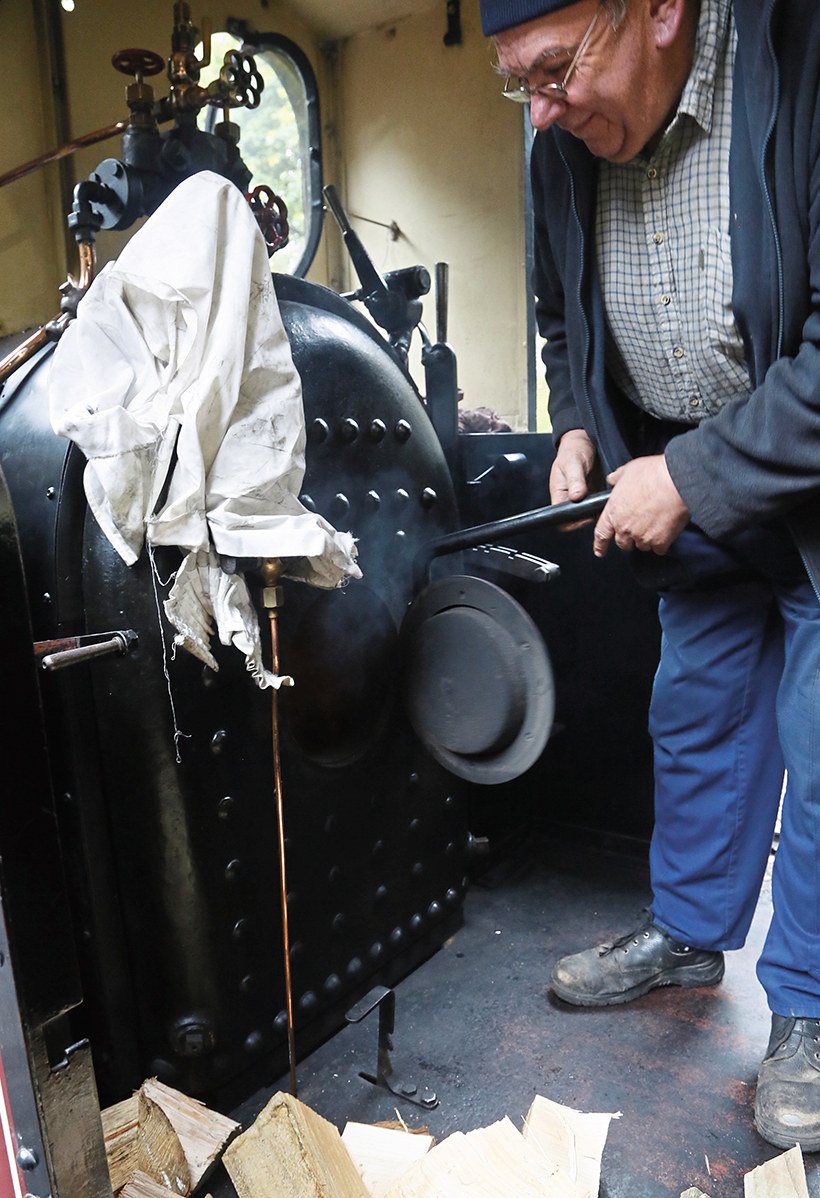
With the fire in place and the wood soaked in paraffin, the fire comes alive.
I was on the stand by 8.15am when I said hallo to my partner for the day, Brian Hope who’s a professional engineer of some repute. He has been a road steam owner over the years and started out in 1979 with 1902 Aveling & Porter RC10 No. 5156, an overhead slide-valve compound roller, and has since had many other engines through his hands. His engineering skills are used by many today for projects small and large.
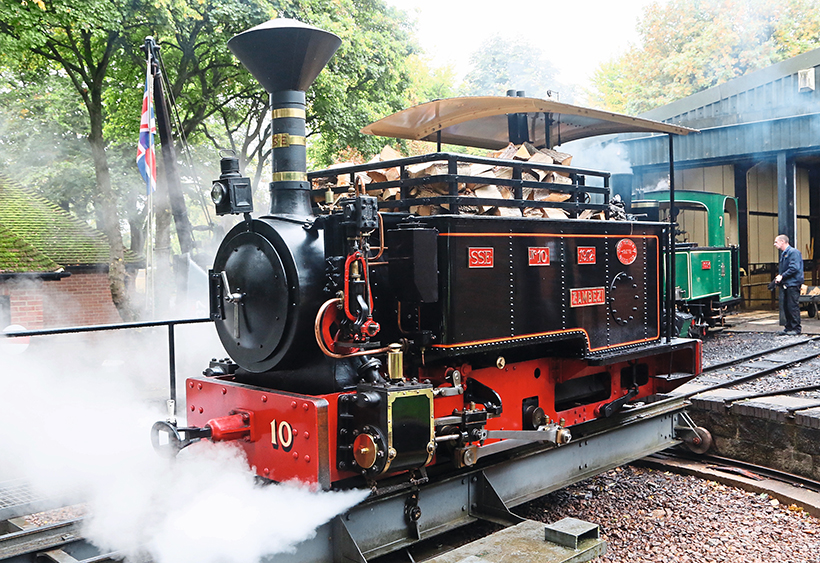
The mighty 1912 Fowler 0-4-2 Zambezi is ready on the turntable to move over to the live tracks and head to collect its train.
Helga was in the second line of fascinating railway locomotives here so we weren’t due on parade until later in the morning. Making steam already was No.2 Katie, an 1931 0-6-0 well tank built by Jung of Jungenthal, Germany as No. 3872. This engine spent its entire working life in Cameroon, West Africa. Brought to England for preservation in 1973, it was acquired by Bredgar in 1980; an interesting feature is the lack of flanges on the centre pair of driving wheels, enabling very tight curves to be negotiated by this popular engine.
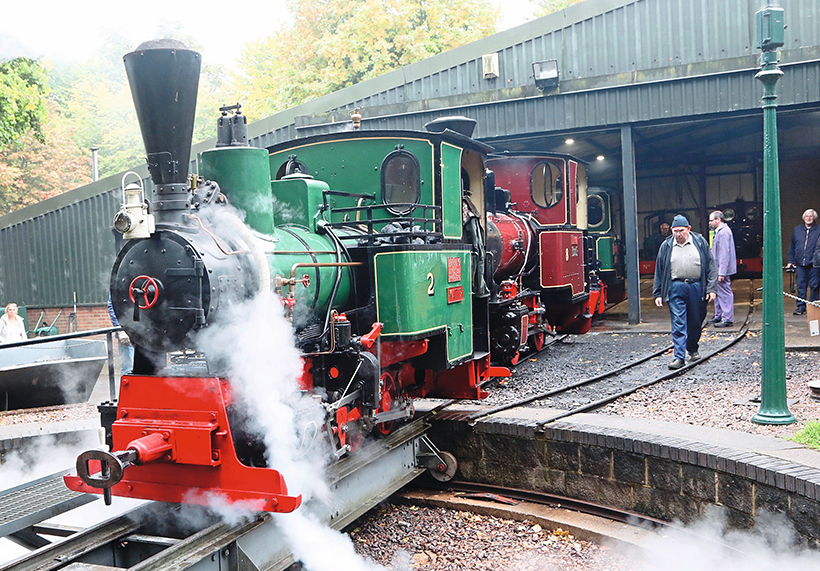
With Zambezi gone, Katie pulls out Helga for the day ahead.
My favourite engine here has to be the 1912 Fowler 0-4-2 Zambezi. From the Sena Sugar Estates in Mozambique. One of the first sugar mills was at Mopeia, which had an unusually small gauge railway of 50cm (1ft 7 5/8in). A number of steam locomotives were ordered from John Fowler of Leeds and the first was delivered in 1898. At least six others followed, this locomotive being the fourth, works No. 13573. Some of these locomotives were eventually transferred to another mill at Marromeu where they were re-gauged to 60cm (2ft) but this locomotive stayed at Mopeia where it worked until about 1965. The wood-burning engine came here to the BWLR in 1998 and required re-gauging and a new boiler before returning to service in 2011.
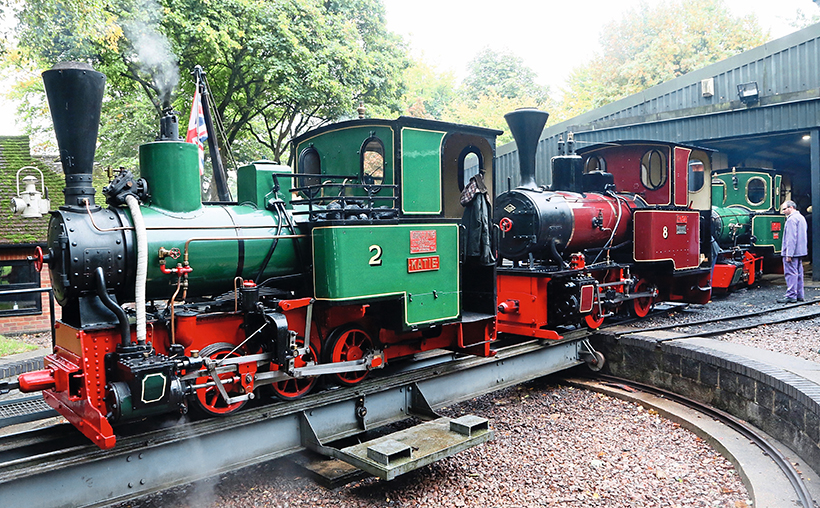
You can just get two engines together on the turntable.
At 9am I was made welcome by David Parfitt, the general manager here, took part in the safety briefing and was then introduced to the rest of the gang. Harry used to drive the immaculate ex-Henry Woodham Ruston & Hornsby SCR road roller No.115023 which has since left the site. He took charge of Katie No. 2 as it shunted the locomotives about after Simon had left the depot with Fowler Zambezi to head the first trains of the day. Katie was in its last months on the track as it’s now undergoing its 10-year requirement under Tony Baker, the resident ‘do it all’ man.
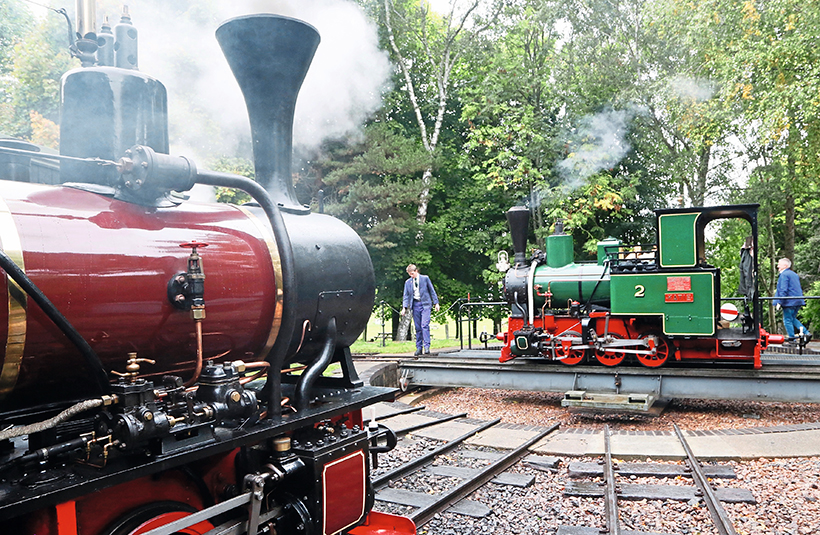
Helga is coming alive as Katie goes on her way to collect a train.
Helga had just gone through a light overhaul during its 10-year test. The fire had been lit by Brian on the wood provided, after making sure the firebars were clean and there was water in the boiler. The engine didn’t need much polishing as all engines are kept in immaculate condition. Brian oiled the motion and filled up the various oil cups. We moved up to the front line and were joined on the track next door by slow steamer Lady Joan, 1922 Hunslet No. 1429 ‘Port Class’ engine that was used down at Port Dinorwic on the Menai Straits. It ended up working in the quarry at Llanberis without its cab and more. It was preserved in 1967 and worked at Woburn Abbey, later Whipsnade Zoo and came to the line here when locally owned, but today is now part of the line’s collection.
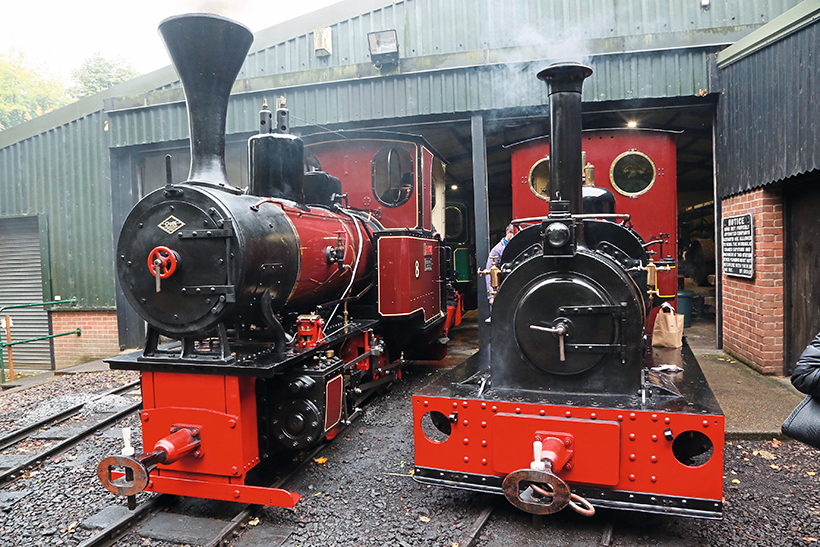
Hunslet Joan joins the fun! This engine was a guest from The Richmond Light Railway – there’s certainly a difference in size.
Helga was making steam well and with the drain cocks open all the excess condensation could be released from the powerful cylinders. I fed the fire as required in the ‘little and often’ fashion in the long lean firebox. We had 180psi in under two hours and David Parfitt radioed and called us to the main line which is three-quarters of a mile in length. We stopped at the coal stage and refilled the bunker as required, but didn’t need any water at the time.
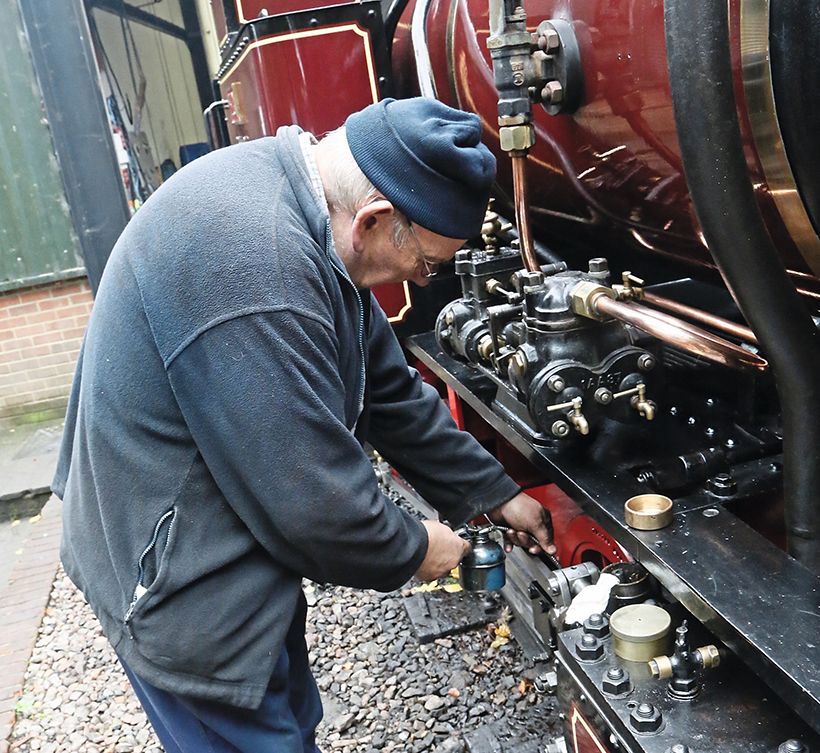
As steam pressure rises, Brian fills the oil pots and lubricates all around.
The train came through that we were to take over from, Zambezi at the head end. The points were changed and we were given permission to head Helga onto the mainline; she certainly had some power and rode very impressively. The cab has plenty of room for two people. I put the powerful injector on for a few seconds – it also features a mechanical pump but we did not need to use it. Brian slowly coupled up to the coaches and after a few minutes we were given the staff to take the coaches down across the road and into the main station.
After we had arrived at the station the public boarded the train and fresh faces were seen in the coach seats as Zambezi followed down to the depot with her day’s work done. Although a blower is fitted to Helga it wasn’t needed at all while in the station. With plenty of steam pressure and water we were given the off as Brian opened the fine to use regulator and closed the drain cocks, as we headed down hill to Stoney Shaw station. The engine made it look easy as Brian cruised down the hill past the signal box where the staff were exchanged and into the station we went. After the passengers had mostly alighted the train we uncoupled, over the points and ran around our train to head it, smokebox first.
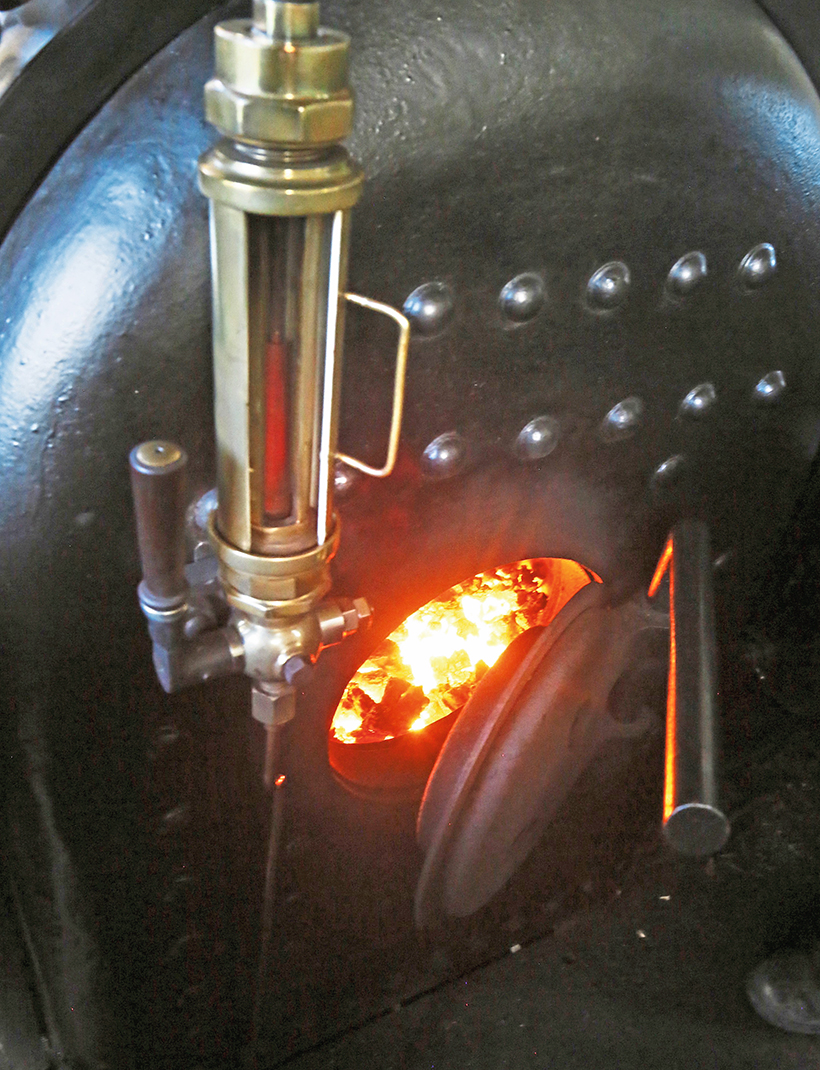
Looking good – plenty of water and a good fire, all’s ready for the main line.
I attended to the fire, very conscious of the fact I did not want the safety valves blowing off in the station and wasting steam and water. After the usual chit-chat that goes on between staff and engine crew we were ready for the return journey, all uphill with the pressure just on 180 again as we just powered our way up the long drag and curve and further on, by now in warm afternoon sunshine and still with a good crowd here.
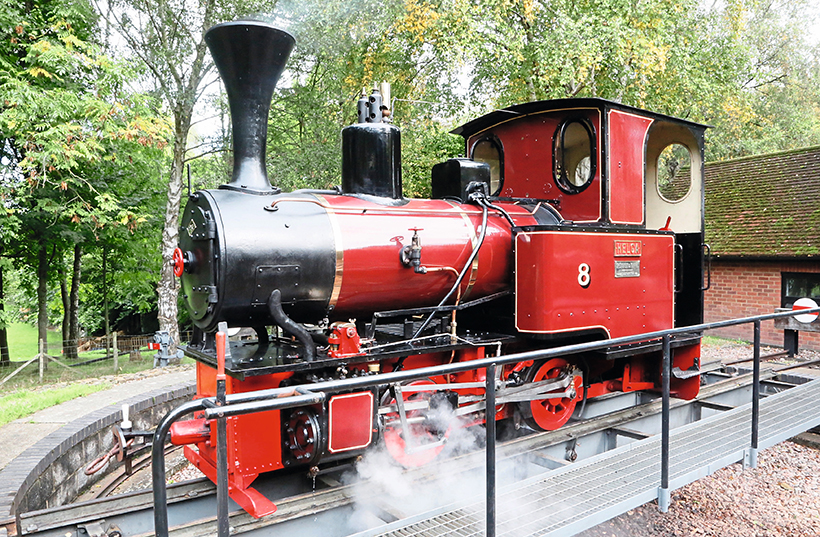
We’re off! With 140psi on the clock, we’re ready to coal-up for the day ahead.
During the afternoon we made three trips up and down the line, taking on water just once. Helga was pure magic and was certainly impressive. We made sure the oil cups were well filled up at all times. On the last journey we were joined by the smaller 1912 0-4-0 Orenstein & Koppel No. 5668 No. 6 called Eigau, which worked in the UK all its life at Penryhn Quarry and later at Bressingham before coming here in 1995.
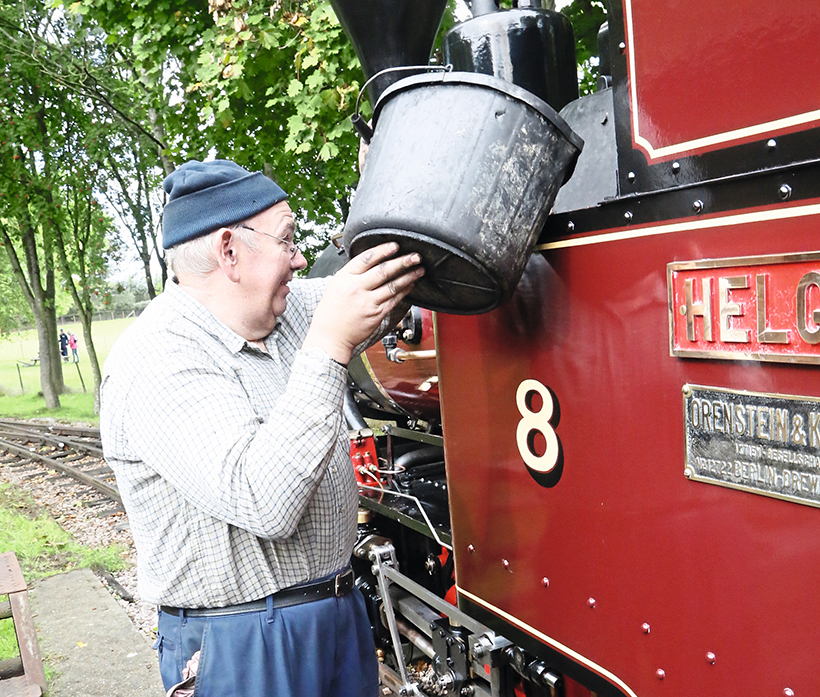
Coaling up is a manual job; pity about the plastic bucket!
Before you knew it we were on the depot again after taking to the turntable. Brian cleaned what was left of the fire out through the firebars as I cleaned the engine as required. What a day it had been, Brian as always makes it look easy, but we were on a relatively modern industrial steam locomotive after all. Helga can match anything here steam-wise, although perhaps some of the other drivers and firemen would not agree.
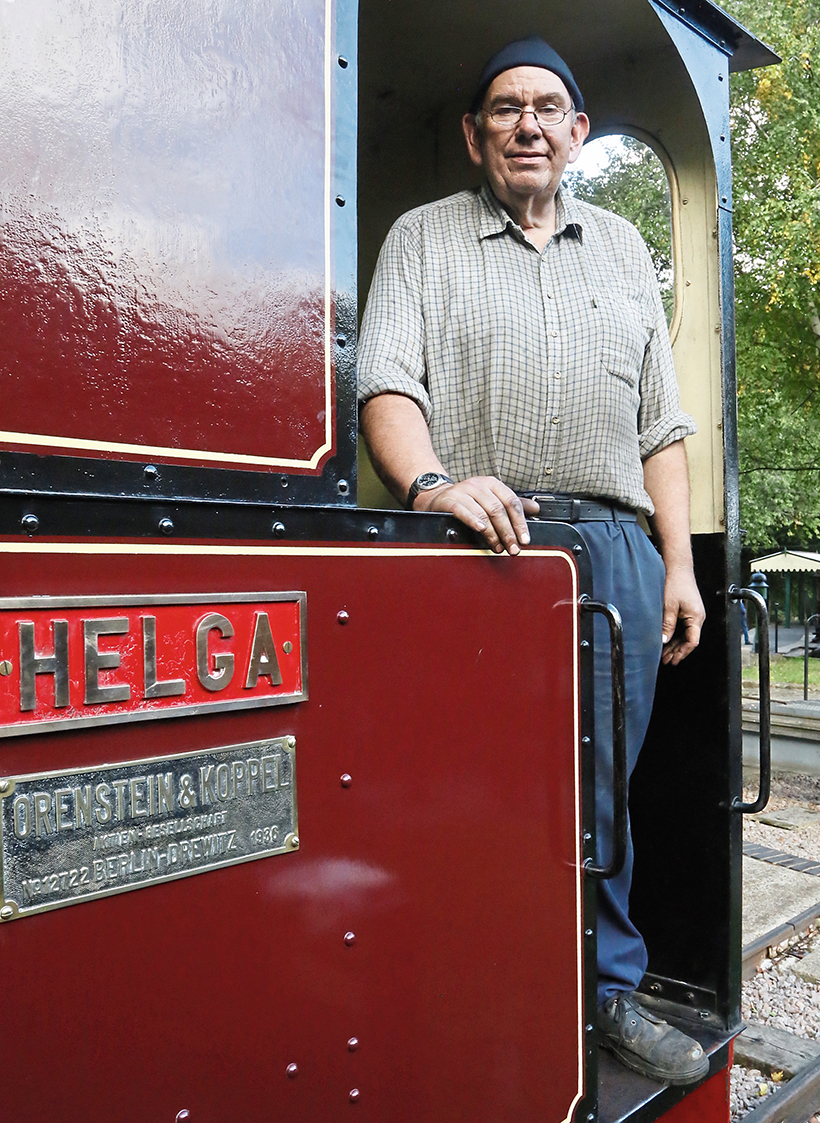
Brian is ready for the day ahead with Helga as we come off shed.
If you have never been to this line before, you need to visit – it’s a great day out that’s for sure!

What a great day was had by all, including Helga’s fireman.
The editor thanks Bill Best junior, David Parfitt, Brian Hope and all the volunteers who made his day very special.
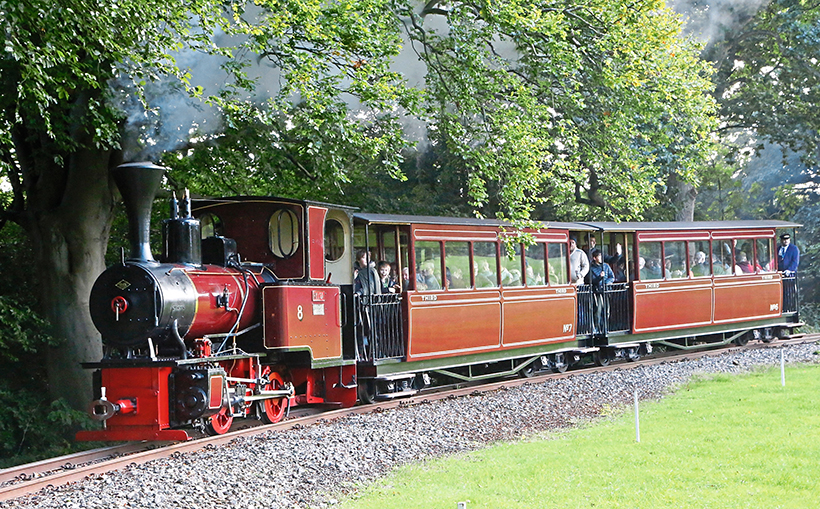
Climbing the bank is nothing for this very impressive German-built locomotive; members of the company’s founding family became Nazi gas chamber victims.
This feature comes from a recent issue of Old Glory, and you can get a money-saving subscription to this magazine simply by clicking HERE



